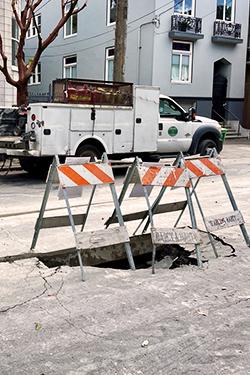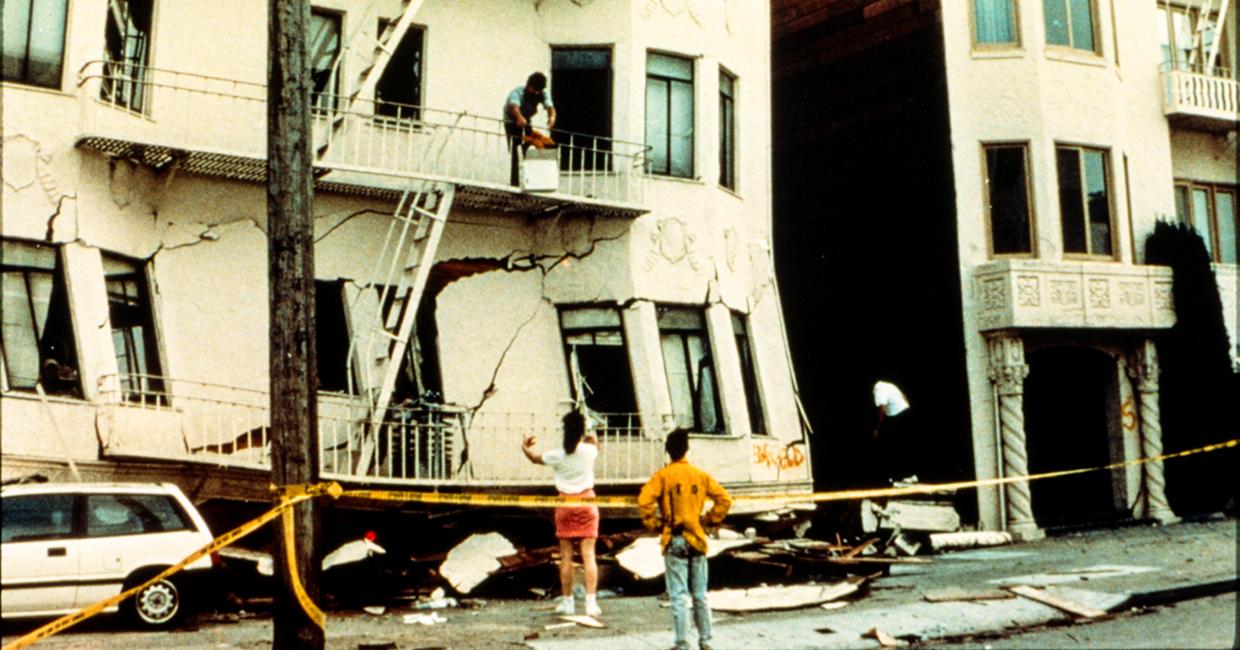The thirty-third anniversary of the 1989 Loma Prieta earthquake reminds us of the importance of maintaining and upgrading our critical aging infrastructure. The San Francisco Public Utilities Commission (SFPUC) partners with the SF Department of Public Works on the Small Diameter Sewer Rehabilitation and Renewal (R & R) Program to upgrade miles and miles of sewer mains each year.

In San Francisco, there’s an old saying about painting the Golden Gate Bridge. It’s so big that when painters finish one end, they need to start painting the other end. With over 1,000 miles of sewer mains under San Francisco streets, we’re in a race against time to upgrade the approximately 300 miles of old brick sewer that are over 100 years old.
When I asked SF Public Works Resident Engineer Brian Wong about the importance of upgrading our combined sewer system, he joked that “if you enjoy the ability to flush a toilet, then we gotta do this!" All joking aside, it’s true. One of the most important drivers of our work is to ensure our goal of protecting public health and the environment by collecting, transporting, and treating the City’s dirty water. Making these investments now prevents costly and disruptive emergency repairs.
Much of this work happens as planned, with residents and merchants experiencing a few weeks to a couple of months of work in the area. Often, these short bouts of work happen quickly and seamlessly. Years of preparation by a team of staff from SFPUC, SF Public Works, and SF Municipal Transportation Agency (SFMTA) get compressed into a few weeks of excavation, sewer installation, new connections, and repaving.
Sometimes, we uncover growing yet invisible challenges that must be immediately addressed. A recent example of this occurred in August when crews cut a straight line down the street to guide demolition and a sinkhole formed. Fortunately, the crews acted swiftly to ensure safety measures were implemented to secure the area, call for reinforcements, and prepare the areas for larger repairs than anticipated.
While it’s often difficult to determine the exact cause, sinkholes typically form when soil and water can flow away from the area to create a void under the street. Cracks and fractures form on aging sewer pipes, and misalignments at connection points cause small holes that soil can fall into. In some instances, small cracks and fractures from sewer pipes can displace soil in the area. In this case, crews could quickly fill the void and upgrade the pipe to address the sinkhole.

It costs more money to deal with accidents and hazardous events than proactively upgrade infrastructure. These are costs that get passed onto ratepayers and taxpayers like you. When working proactively, public agencies like the SFPUC, SF Public Works and SFMTA have more time to plan and collaborate on infrastructure maintenance projects together to lessen costs and disruptions to the public.
“The benefit of Citywide teamwork is felt by the public, taxpayers, and ratepayers. It’s rewarding to see our years and hours upon hours spent coordinating and planning our work pay off literally in decreased costs and disruptions,” said Aileen Caylao, SFPUC Project Manager.
Overall, as we reflect on the lessons from the 1989 Loma Prieta earthquake, we are reminded not to take our sewer and water infrastructure for granted. Without maintenance, they can fall apart, real people’s health can suffer, and lives can be unnecessarily lost.


